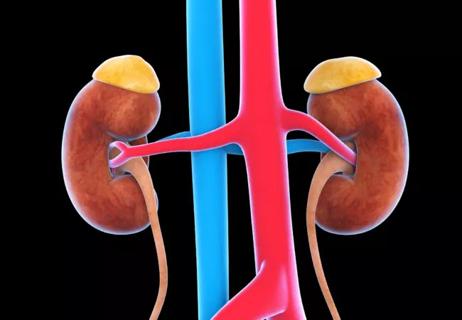Understanding vitamin A toxicity and treatment

by Saif Munther Borgan, MD, Leila Zeinab Khan, MD and Vinni Makin, MD, FACE
Advertisement
Cleveland Clinic is a non-profit academic medical center. Advertising on our site helps support our mission. We do not endorse non-Cleveland Clinic products or services. Policy
This article has been excerpted and reprinted (without references) from the Cleveland Clinic Journal of Medicine (2022;88[2]:99-105). The open-access and fully referenced original article is available at https://www.ccjm.org/content/89/2/99.
Vitamin A should be consumed in appropriate amounts. Excessive intake of preformed vitamin A, such as that found in supplements and animal sources like dairy and eggs is associated with multisystem effects that can include bone resorption and hypercalcemia. Hence, vitamin A toxicity should be explored in unexplained cases of parathyroid hormone-independent hypercalcemia.
This toxicity is often overlooked in the diagnostic evaluation of hypercalcemia. Evaluation of hypercalcemia starts with establishing the role of parathyroid hormone (PTH) in its pathogenesis. An elevated PTH level may indicate primary hyperparathyroidism, tertiary hyperparathyroidism or familial hypocalciuric hypercalcemia. A low PTH should trigger an evaluation for hypercalcemia induced by PTH-related peptide (PTHrP). Vitamin A toxicity should be considered in the diagnostic workup along with malignancy, bone metastasis, vitamin D or calcium toxicity, increased 1,25-hydroxyvitamin D production (e.g., from granulomatous disorders and lymphomas), hyperthyroidism, monoclonal gammopathy and immobility.
In this article, we explore vitamin A toxicity in the differential diagnosis of hypercalcemia.
An elderly woman presented to our outpatient endocrinology practice with mild asymptomatic hypercalcemia. She reported taking two different multivitamin tablets for many years. On laboratory testing, her PTH level was suppressed, PTHrP was normal, 1,25-hydroxyvitamin D and thyroid function tests were normal, and serum and urine electrophoresis did not reveal monoclonal gammopathy. She was not taking any prescription medications that could cause hypercalcemia.
Advertisement
After an extensive workup, her serum vitamin A (retinol) levels were found to be elevated to almost twice the upper limit of normal, indicating vitamin A toxicity. Her multivitamins were discontinued, resulting in improved retinol and calcium levels several months later.
Vitamin A can be ingested as preformed molecules (activated vitamin A) or as vitamin A precursors (“provitamin A”) called carotenoids, which the body converts to retinoids. Preformed vitamin A is derived naturally from animal products such as dairy, fish oils, eggs, liver and meat, whereas carotenoids occur naturally in plant-based foods such as carrots, sweet potatoes and pumpkins. Preformed vitamin A and carotenoids can be found in the same over-the-counter (OTC) products and in prescription medications such as isotretinoin and tretinoin. If a supplement contains both preformed vitamin A and carotenoids, the ratio is usually reported on the ingredient label on the back of the bottle.
Vitamin A toxicity results from excessive intake of preformed vitamin A, not from exposure to vitamin A precursors. The efficiency of absorption of preformed vitamin A through gut transport proteins is high — in the range of 70% to 90% — and does not vary based on the ingested amount. Carotenoids, on the other hand, are not transported by carriers but by passive diffusion across the luminal border, and this results in poor absorption efficiency, in the range of 9% to 22%.
In addition, upon ingestion of excessive amounts of carotenoids, the efficiency of luminal diffusion decreases, which further protects against toxicity from over-ingestion. Based on this, OTC vitamins containing carotenoids may be safer for patients than those containing preformed vitamin A. The patient described in our case scenario was taking a supplement with vitamin A content that was above the recommended daily intake (RDI).
Advertisement
Once absorbed, most vitamin A is stored in the liver and released into the bloodstream, where retinol-binding protein transports it to its target tissues. If the body’s supply of vitamin A changes, the liver modifies the release of retinol into the serum to maintain normal plasma retinol levels. However, a normal plasma retinol level does not always indicate normal total body levels of vitamin A, and low or high retinol levels can indicate a significant abnormality of the body’s vitamin A stores. The half-life of vitamin A is estimated to be 128 days, so it can take many months for retinol levels to normalize after vitamin A toxicity.
OTC supplements are the most common source of clinically significant preformed vitamin A ingestion. In a national survey, approximately half of the U.S. population reported using an OTC supplement, with 28% to 37% reporting using a multivitamin that contains vitamin A. Vitamin A use was greatest in seniors. This high percentage of use is concerning, given that multivitamin products are not under U.S. FDA regulation, and reported vitamin ingredients are often inaccurate and underestimated. Manufacturers can sell vitamins OTC, often with quantities above the recommended daily intake, and packaging, flavoring and chewable formulations make the products more desirable, increasing the risk of vitamin A toxicity in children.
The proposed standardized measure for vitamin A is retinol activity equivalents (RAE) in micrograms. The RDI of vitamin A is 900 μg RAE for men and 700 μg RAE for women. The RDI for children varies with age but can range from 300 μg RAE to 700 μg RAE.
Advertisement
The tolerable upper daily intake level of vitamin A is approximately 3,000 μg RAE. Higher levels increase the risk of vitamin A-induced chronic liver damage and fetal teratogenicity. Importantly, chronic daily ingestion of preformed vitamin A above the recommended intake (700 to 900 μg RAE) but below the tolerable upper intake (3,000 μg RAE) may still be harmful, especially to the musculoskeletal system.
Acute ingestion (i.e., a single dose) of more than 200,000 μg RAE of preformed vitamin A is required to cause acute hypervitaminosis A syndrome in adults.
Acute over-ingestion of vitamin A can affect multiple systems:
In clinical practice, however, chronic over-ingestion of vitamin A is a much more likely cause of vitamin A toxicity.
Treatment of vitamin A toxicity is based on anecdotal data from case reports. The recommendation is to withdraw sources of vitamin A, especially of preformed vitamin A, and provide standard supportive treatment for multisystem manifestations. Limited data are available regarding the role of antiresorptive agents in treating vitamin A-related skeletal adverse effects and hypercalcemia. With discontinuation of vitamin A ingestion, retinol and calcium levels are expected to improve within weeks to months, although longitudinal prognostic data are limited.
Advertisement
Consumption of plant-derived precursor vitamin A (carotenoids) is harmless, but excessive consumption of preformed vitamin A commonly found in OTC supplements and some animal products can have negative multisystem manifestations. Vitamin A is an often overlooked cause of hypercalcemia, thought to stem from its adverse effect on the skeletal system through stimulation of bone resorption and inhibition of bone formation. In the setting of unexplained PTH-independent hypercalcemia, serum retinol levels should be checked but interpreted with caution, as they do not always reflect total body levels. Treatment involves withdrawal of vitamin A sources and supportive care. Given the long half-life of retinol, normalization can take several months.
The full-length and fully referenced original version of this review is available at https://www.ccjm.org/content/89/2/99.
Saif Munther Borgan, MD is a Resident Fellow with the Department of Endocrinology, Diabetes, and Metabolism at Cleveland Clinic, Cleveland, Ohio.
Leila Zeinab Khan, MD is the Medical Director for the Calcium and Parathyroid Center in the Department of Endocrinology, Diabetes and Metabolism and is a Clinical Assistant Professor of Medicine at the Cleveland Clinic Lerner College of Medicine of Case Western Reserve University, Cleveland, Ohio.
Vinni Makin, MD, FACE is the Director of the East Region, Department of Endocrinology, Diabetes and Metabolism and Assistant Professor of Medicine at the Cleveland Clinic Lerner College of Medicine of Case Western Reserve University, Cleveland, Ohio.
Advertisement

Giving young patients a hand as they take charge of their own health

Case illustrates how easily condition can mimic preeclampsia

Guidance for counseling patients on the use of one of the most common daily supplements taken in the US

For patients with kidney disease, failure to recognize all parathyroid glands can result in failed surgery

Treating a rare eye disease with a multi-disciplinary approach

Focus on metabolic bone disease

Case report illustrates the importance of maintaining high levels of clinical suspicion

PCPs rate their knowledge levels of the condition ‘average’ and desire further education